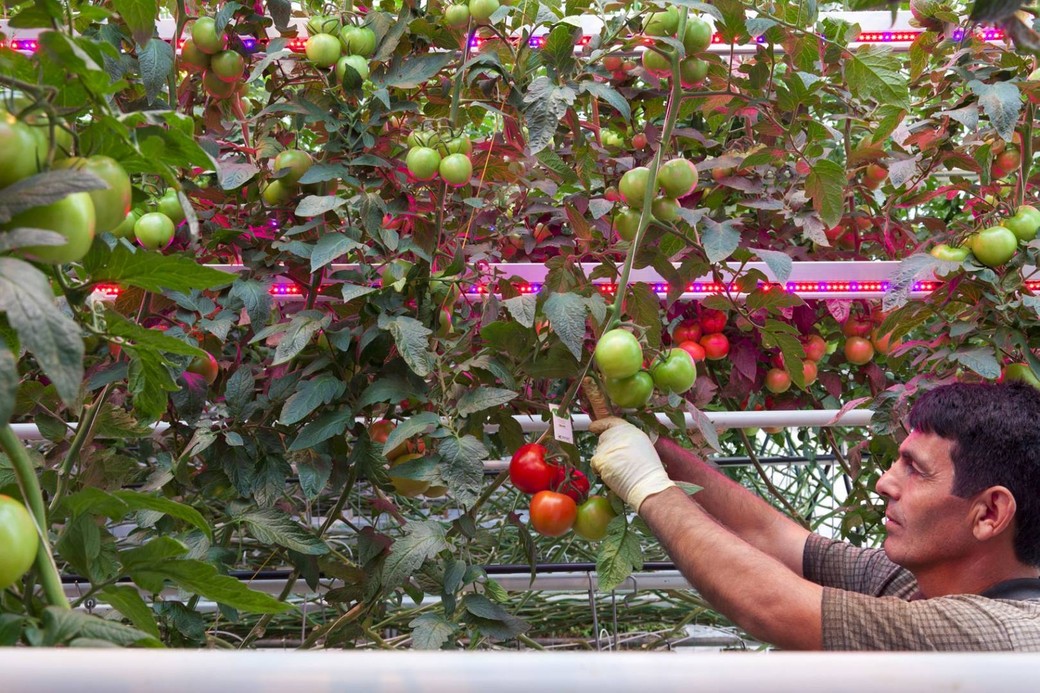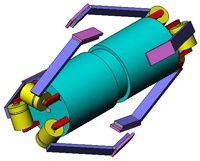
Greenhouse Producers Seek Light During Darkest Days
Now that Canada is in the midst of the shortest and coldest days of the year, light and heat management are top of mind for many producers who operate greenhouses. Managing supplemental lighting to promote growth is not as simple as flipping a switch – it’s an art form.
From December to February, greenhouse producers require supplemental lighting every day for about 18 hours. The 24-hour average temperature is the most important thing to monitor in winter production. If it’s too warm for the plant in relation to the light received, the plant burns more sugar than it produces.
“There is no advantage in providing more hours of light per day, as an excess of light might result in a loss of yields,” said Audrey Boulianne, Production Coordinator at Savoura, a Quebec company specializing in greenhouse tomatoes.
Increasing energy costs, changing weather patterns and greater consumer demand for local, fresh and organic produce mean more sophisticated and efficient growing solutions are needed to compete with countries with plentiful sunshine and lower farm labour costs. As agriculture and food preferences evolve, greenhouse operators must also adapt. The future of supplemental lighting is centred on finding an alternative to high-pressure sodium (HPS) lamps, which is the traditional artificial light in commercial greenhouses.
Light-emitting diodes (LEDs) have the potential to replace high-energy consuming systems, such as HPS lamps, and are already used in commercial greenhouses in some European countries, as well as experimentally in the United States and in Canada. This new technology may result in earlier flowering, faster root growth, more economical use of space and increased yields.
GE Lighting, in collaboration with the Government of Canada, McGill University and Savoura, conducted research involving the use of LED lighting technology in commercial greenhouses. The research results validated LED technology’s significance on improved growing efficiencies and reduced operational costs. According to GE Lighting, LED as a lighting application in commercial greenhouses is an exciting and emerging market for the technology, but one that requires additional incubation for full economic development. It will prove to be of great value to the agricultural community in the future.
Boulianne mentions that the combination of the two light sources showed the best results in terms of crops. Opposite to HPS light, LED light doesn’t emit heat and can be installed vertically, along the plant.
“In Canada, we have to heat our installations during winter and ventilate in summer,” said Boulianne. “Greenhouse producers are high-energy consumers all year. A mix of the HPS and LED lights could benefit us over the long-term. Our choice will depend on the cost of installing this new lighting system in our operation. We’ll look at the option for sure when planning for our new sites. It will represent a major change in our production technique.”
If LED light is one day commercialized for greenhouses in Canada, we may see it used as a complement to HPS light and growth in this hybrid lighting system.
“Greenhouse growers are looking towards lighting and co-generation as the next steps to efficiency,” noted Amit Varma, Senior Relationship Manager at Farm Credit Canada (FCC) in Surrey, B.C.
Varma said growers are willing to invest in technology that can take them to year-round production. For lenders, the risk analysis sometimes includes in-house research on whether new technology is proven to work in the field.
“The greenhouse owners, managers and operators are quite innovative and entrepreneurial,” said Dave Orosz, an FCC Senior Relationship Manager, based in Essex, Ontario. “Lending to this sector is driven by the biggest issues of the day, whether that’s energy or lighting.”
When it comes to financing capital-intensive projects, Orosz said it comes down to basic principles, like in any other form of production.
“Are the right people in charge with the right history and equity to try something new? How much is the grower relying on that experimental technology to work? It’s all about risk management,” he said.
Meanwhile, LED technology is widely used to light up homes, streets and holiday lights, but Canadians will have to wait a bit longer to consume delicious produce grown using the same technology.











